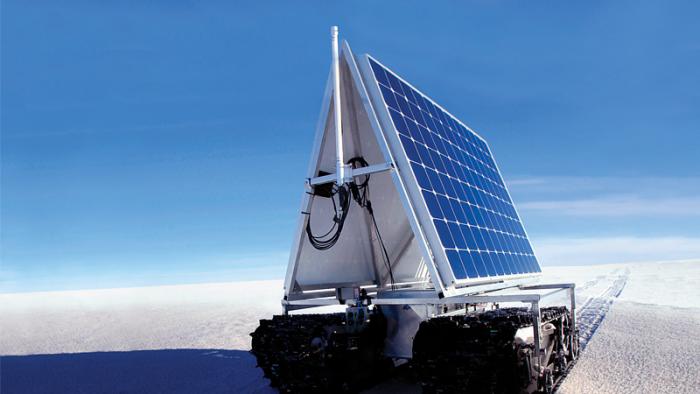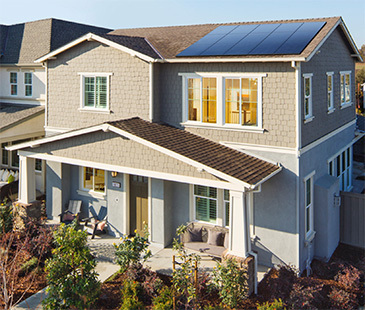
Editors Note: In 2020, SunPower announced the completion of the strategic spin-off of its manufacturing division into a separate business named Maxeon Solar Technologies, Ltd. As a result, SunPower has expanded its offerings to drive future growth. The SunPower Equinox® system now offers multiple panel options, including front- and back-contact panels, all of which are responsibly and rigorously quality tested to provide the best energy solution for your home.
This post is part of a series highlighting how SunPower’s record-setting solar technology has helped power some amazing adventures over the years, inspiring our latest campaign: Demand Better Solar®.
SunPower's advanced solar technology, developed through collaborations with NASA, withstands extreme conditions like low-light, cold, and high winds. The company's commitment to innovation, ensures reliable and efficient solar solutions for residential customers, and fighting against climate change.
Consumers who are considering going solar often ask us if SunPower solar panels can withstand all that Mother Nature might bring to the rooftops of their homes or businesses.
We’re glad they’re doing their homework because not all solar is alike. During our company’s 30-year history our collaborations with solar pioneers such as NASA have inspired us to design and manufacture better solar cells that outperform conventional technology in low-light situations, extreme cold, high winds and more.
That’s why NASA chose SunPower high-efficiency cells to build experimental solar-powered aircraft, generate power at NASA facilities, explore the Greenland icecap and test solar for unmanned vehicles designed to explore planets such as Mars.
If our solar is efficient and durable enough for a frigid icecap or outer space, we’re confident it will provide reliable clean power for our residential, commercial and power plant customers. And, because we’ve designed and engineered our systems to contain 70 percent fewer visible parts, it looks better on your roof.
Record-breaking unmanned NASA flights
In 1997, long before you could buy a drone at your neighborhood electronics store, NASA began using SunPower solar cells on its unmanned, remotely piloted, solar-powered, high-altitude aircraft (also known as an “Unmanned Aerial Vehicles,” or UAVs). One of them, Pathfinder Plus, set an altitude record of 80,201 feet.
In 1999, NASA partnered with Helios, a second-generation High-Altitude, Long-Endurance (HALE) UAV project. NASA needed the lightest possible cell that would tolerate high air pressure, maximize energy production and even capture light reflected off clouds to generate more power.
SunPower reengineered its cells for Helios. The resulting huge gains in efficiency helped Helios set a new world record of more than 96,000 feet in 2001.
GROVER the Greenland rover
More recently we were part of NASA’s Greenland rover project, which was tested on the Greenland ice sheet in May of 2013.
Dubbed GROVER, short for both “Greenland Rover” and “Goddard Remotely Operated Vehicle for Exploration and Research,” the hardy SunPower-energized rover is an autonomous, GPS-guided, solar-operated robot that carries a ground-penetrating radar to examine the layers of Greenland’s ice sheet.
GROVER’s mission was to gather data to help scientists understand how immense ice sheets lose and gain ice. GROVER was designed to travel in inhospitable climates where it’s extremely challenging or impossible for humans to survive. (Watch a video of GROVER trekking across the ice.)
During its five-week trial run at the highest point of Greenland, the 800-pound GROVER and its two SunPower panels sporting 192 Maxeon® solar cells handled 30 mph wind gusts and temperatures as low as -22° F, proving that SunPower solar can endure some of Earth’s harshest environments.
NASA researchers envision someday launching a veritable army of smaller robots that can recharge from GROVER and cover more ground even more quickly and thoroughly. They believe GROVER will revolutionize climate research and make a real difference in our understanding of the effects of snow, ice and glacial changes on our planet.
With ever increasing attention on renewable energies such as solar being part of the solution to climate change, we’re proud that our long history with these NASA projects helped us innovate better solar technology now used today by hundreds of thousands of homes and businesses worldwide.
Interested in purchasing the same solar that powers such record-setting solar projects? Use our solar calculator to find out how much you could save going solar with SunPower.
© 2016 SunPower Corporation. All Rights Reserved. SUNPOWER, the SUNPOWER logo DEMAND BETTER SOLAR and MAXEON are trademarks or registered trademarks of SunPower Corporation in the U.S. and other countries as well.

